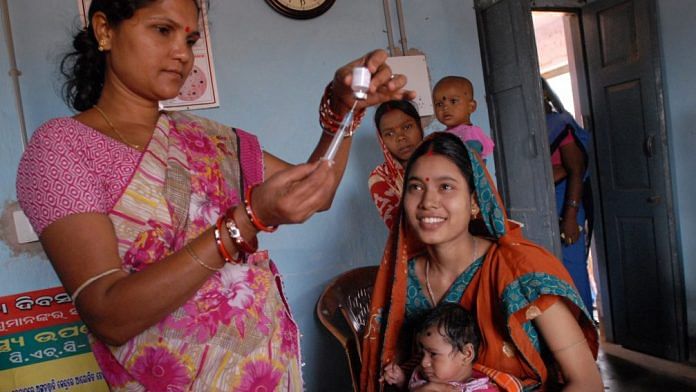An estimated 53% of India’s women in the reproductive age group (15-29 years) are said to suffer from anaemia, according to the latest National Family Health Survey.
New Delhi: The anaemia epidemic gripping Indian women can be tackled if the problem of teenage pregnancy is addressed, a recent study by International Food Policy Research Institute (IFPRI), an agriculture research body, has suggested.
According to the report, controlling open defecation and educating women are other factors that might help curb its incidence.
An estimated 53 per cent of India’s women in the reproductive age group (15-29 years) are said to suffer from anaemia, according to the latest National Family Health Survey (NFHS-4), released in 2016. According to the Global Nutrition Report of the World Health Organization (WHO), India has the largest number of women affected by anaemia.
Why it matters
Most commonly caused by an iron deficiency, anaemia is a condition where the number of red blood cells or their oxygen-carrying capacity is insufficient to perform bodily functions.
In its severe form, anaemia is associated with fatigue, weakness, dizziness and drowsiness. According to the WHO, pregnant women and children are particularly vulnerable to the condition, which increases “perinatal risks for mothers and newborns and contributes to preventable mortality”.
“Women of reproductive age experience a disproportionately large burden of anaemia due to menstrual blood losses as well as higher nutrient requirements and increased blood volume during pregnancy,” said Samuel Scott, co-author of the IFPRI report.
According to the study, conducted in 446 Indian districts among more than 17,000 pregnant women aged 15-49 years, an increase of 2.2 years in the average age of pregnancy (from 23.3 years to 25.5 years) led to a decline of seven per cent in anaemia prevalence over a decade (2002 to 2012).
The reason, according to the researchers, is that girls who get pregnant at a young age drop out of school early and are likely to be less educated compared with those who get pregnant later.
It added that an older age means the mother is in her prime and likely to have better eating habits.
Teenage pregnancy has emerged as a major problem for India as child marriage continues despite a decades-long systemic push, with the Supreme Court just last year labeling intercourse with a minor wife rape.
A Unicef report this year pointed out a sharp fall in child marriage in India over the past decade, but noted that 27 per cent of the country’s girls were still being married underage, that is, at below 18 years.
Strides have also been made in curbing teenage pregnancy, with the NFHS-4 (2015-16) estimating the proportion at 7.9 per cent of girls aged 15-19 years, against 16 per cent in NFHS-3 (2005-06), but the figure still translates to millions, according to the UN Population Fund.
Other factors
Another significant finding is the role of open defecation, an endemic problem the government has been trying to curb through the Swachh Bharat Abhiyan. According to the study, a 22 per cent reduction in village-level open defecation between 2002 and 2012 led to a 9 per cent decline in prevalence.
Denser cities seem to be a factor as well, with the study finding an estimated increase of 1.7 per cent in anaemia prevalence between 2002 and 2012 for a 6.7 per cent rise in urban population.
“Women who migrate to urban areas experience an increased risk of anaemia due to the unsanitary environmental conditions in urban slums and an inadequate consumption of nutrient-rich foods due to food being relatively more expensive in urban areas.”






